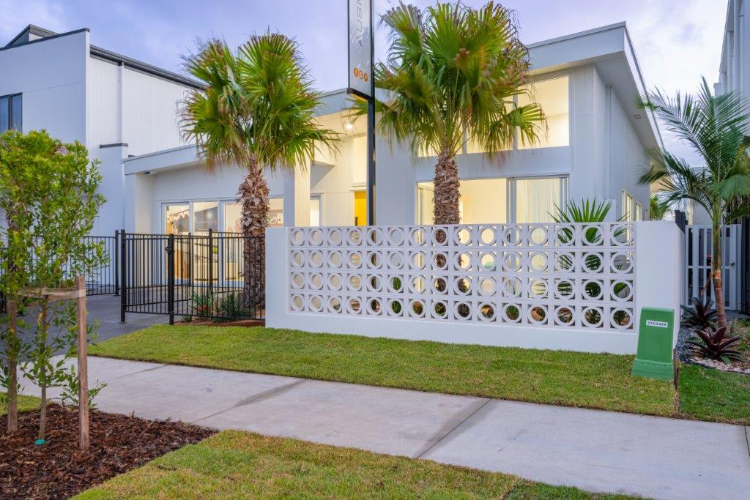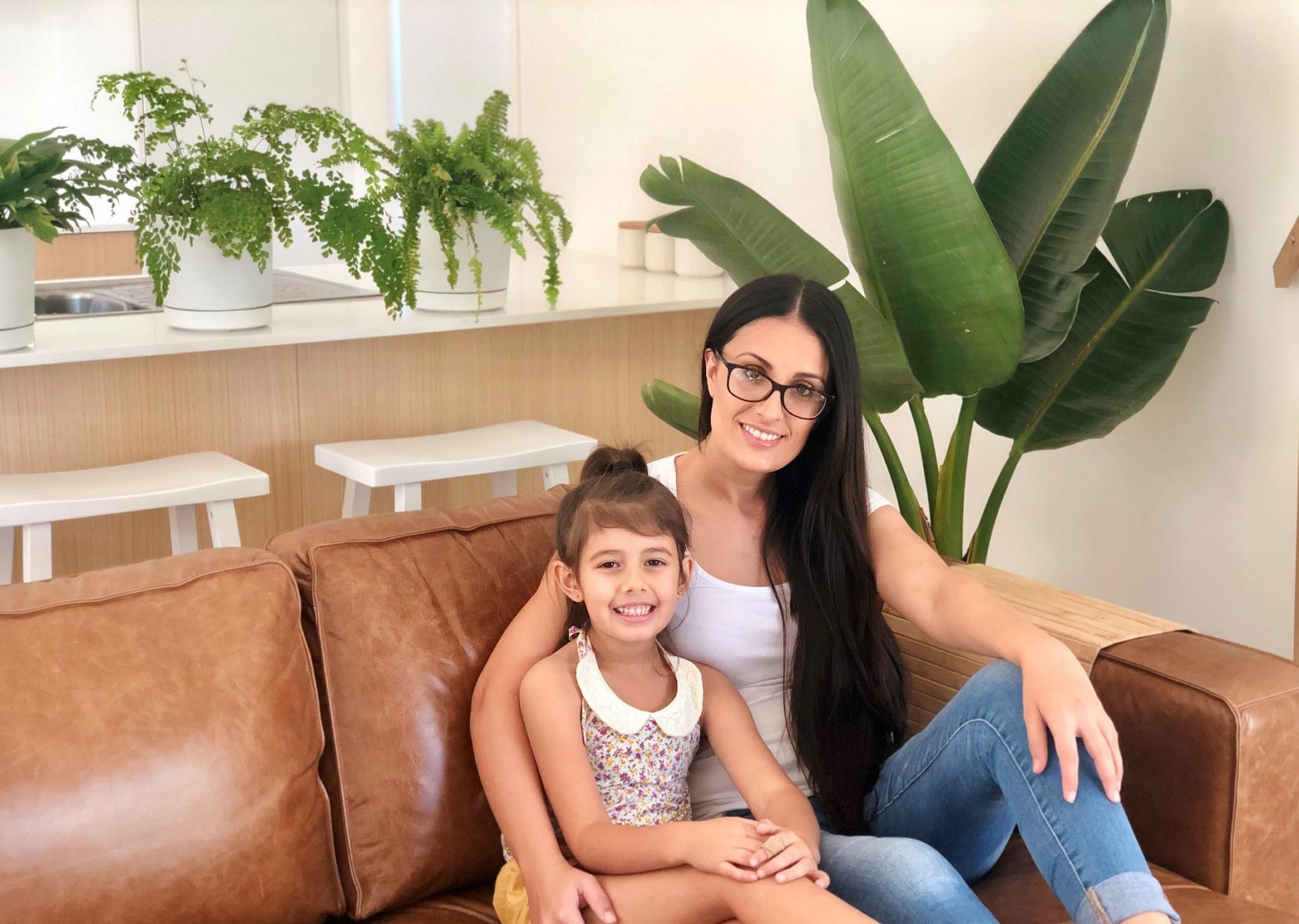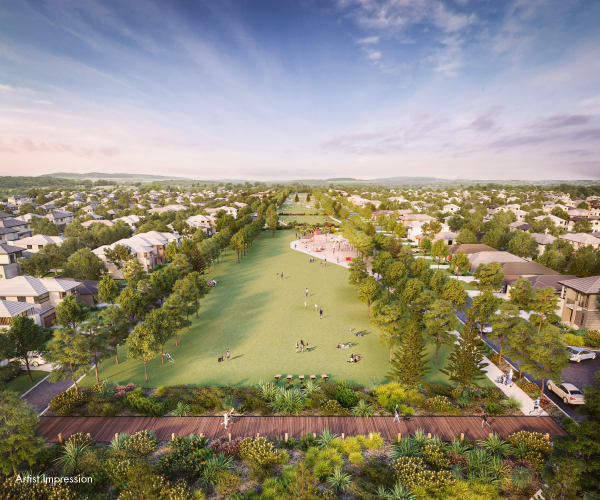7 Tips for Choosing a Home in a Hot Climate
November 16, 2023

In the stifling heat of a Queensland summer, it can be almost second nature to crank up the air-conditioning without a second thought. This can be a costly solution that impacts not only your bank balance, but our beaches and forests. Passive design, however, means working with the climate, not against it. Whether you’re building or buying a home, these simple principles can greatly make your home life that little bit cooler. Here are 5 Tips for Choosing a Home in a Hot Climate.
Shaded Outdoor Spaces
Not only does a touch of greenery add ventilation, a shaded outdoor space can be the coolest place on the property. What can you look for:
- Screened and shaded outdoor living areas.
- Outdoor kitchen utilities and built-in seating.
- A shaded garden. This keeps the external space cooler, which has a knock-on effect in keeping the inside cool also.
- Deciduous plants. These can be effective sun shaders.
- If your property doesn’t have a shaded garden area, consider buying in a community where parklands are walking distance, for when you want to escape on a hot day.
Look for Airflow
This one’s as simple as it sounds: a cooling breeze is your saviour in a hot summer. Here are a few key questions you can ask to assess a home’s cross-ventilation.
- Does the layout encourage the movement of breezes through and within the building? Open-plan homes generally have better airflow. Which walls block the ventilation, and by how much?
- As opening doors increases airflows, look for doors that can be left open without disrupting daily motion.
- Will the most used (and most odorous) rooms in the house – the kitchen, bathrooms and laundry – get enough airflow?
- Does the house have roof vents?
- If you are building a home, speak to your builder about designing for airflow. Builders for communities such as Harmony are skilled in their use of passive design techniques, in a bid to design for hot climates.
Windows
If you are living in a hot climate and you don’t want to waste your money on energy, windows are an important consideration for the home. They let in light and fresh air, yet they can also be the main reason for heat gain in summer. Up to 87% of a home’s heat is gained through its windows. Choosing a home in a hot climate, consider the following about windows to make your home more energy efficient:
- Where are the windows, and how shaded are they?
- How big are the windows, and can they be opened fully?
- In a high humidity climate, it is important to avoid the overuse of glazing. Too much glazing can actually store and transmit heat into the home.
- What type of windows are they? Louvre or casement windows are great for ventilation. If you are building a home, speak to your builder about the options available to you.
Insulation
Reflective insulation is a natural barrier to heat flow, and can keep your home cool in summer without the price-tag and greenhouse gas emissions. Good insulation protects a house against the weather, preventing moisture build-up amongst other benefits. When choosing a home in a hot climate, you can ask and observe the following at an inspection:
- Insulation alone can’t keep a house cool in summer. It works in conjunction with other design factors, for example – if a house is not properly shaded, insulation may increase the “oven effect” as the insulated heat has nowhere to go.
- What building materials are used, and what insulating value do they have? Check with your local building information centre for more details.
- Insulation should be under the roofing material of the home, in the ceiling, and under verandah roofs.
- You can read more about government guidelines for insulation in particular areas here.
Ceiling Fans
Ceiling fans are a must. Not only do they cost less to run than air-conditioning units; they aren’t as bad for the environment. In the Queensland furnace summer, look for ceiling fans in a home. It’s recommended that they are in all living and sleeping spaces. If they aren’t, this is not a deal-breaker: it simply means you might need to invest in a good old pedestal fan.
Flooring
Flooring is a part of every room in the house. Certain types of flooring retain less heat than others, and selecting the right one is fundamental in keeping the home cool in summer. Here are the best materials for a hot climate.
- Ceramic and porcelain tiles are water-resistant and budget friendly, while still emulating a luxurious feel. Best kept out of direct sunlight, this flooring option is perfect for bathrooms and kitchens.
- Natural stone tiles are a step up from ceramic and porcelain flooring. They are popular for their durability and are cool to the touch, keeping the entire home cool.
- Wood floors, especially if you pick a lighter shade, actually reflect the sun’s rays. Hardwood floors are therefore a great way of bringing down the temperature.
Paint Colours
In a hot climate, a dark coloured roof can greatly increase the heat in a home. This goes for the wall materials too: the more reflective the colour, the more it will keep your home cool. Strong evidence also suggests that colours like blue and white make us feel cooler. When you build your home in a masterplanned community, you will have access to the knowledge of home builders and their designers who can help you understand what colours work best for you and your lifestyle. You can visit a display village in advance to help get a better sense of this.
Keep these simple tips in mind when house-hunting, and you will live comfortably in synchronicity with the nature around you. A home built for the climate will last you for years to come, so it’s important to choose wisely.
To live in Harmony is to experience nature every day. Surrounded by beautiful hinterland and reserves, we are creating a grand network of parklands and green spaces that thread through and connect the entire community. At AVID, we create places where people love to belong.
In the stifling heat of a Queensland summer, it can be almost second nature to crank up the air-conditioning without a second thought. This can be a costly solution that impacts not only your bank balance, but our beaches and forests. Passive design, however, means working with the climate, not against it. Whether you’re building or buying a home, these simple principles can greatly make your home life that little bit cooler. Here are 5 Tips for Choosing a Home in a Hot Climate.
Shaded Outdoor Spaces
Not only does a touch of greenery add ventilation, a shaded outdoor space can be the coolest place on the property. What can you look for:
- Screened and shaded outdoor living areas.
- Outdoor kitchen utilities and built-in seating.
- A shaded garden. This keeps the external space cooler, which has a knock-on effect in keeping the inside cool also.
- Deciduous plants. These can be effective sun shaders.
- If your property doesn’t have a shaded garden area, consider buying in a community where parklands are walking distance, for when you want to escape on a hot day.
Look for Airflow
This one’s as simple as it sounds: a cooling breeze is your saviour in a hot summer. Here are a few key questions you can ask to assess a home’s cross-ventilation.
- Does the layout encourage the movement of breezes through and within the building? Open-plan homes generally have better airflow. Which walls block the ventilation, and by how much?
- As opening doors increases airflows, look for doors that can be left open without disrupting daily motion.
- Will the most used (and most odorous) rooms in the house – the kitchen, bathrooms and laundry – get enough airflow?
- Does the house have roof vents?
- If you are building a home, speak to your builder about designing for airflow. Builders for communities such as Harmony are skilled in their use of passive design techniques, in a bid to design for hot climates.
Windows
If you are living in a hot climate and you don’t want to waste your money on energy, windows are an important consideration for the home. They let in light and fresh air, yet they can also be the main reason for heat gain in summer. Up to 87% of a home’s heat is gained through its windows. Choosing a home in a hot climate, consider the following about windows to make your home more energy efficient:
- Where are the windows, and how shaded are they?
- How big are the windows, and can they be opened fully?
- In a high humidity climate, it is important to avoid the overuse of glazing. Too much glazing can actually store and transmit heat into the home.
- What type of windows are they? Louvre or casement windows are great for ventilation. If you are building a home, speak to your builder about the options available to you.
Insulation
Reflective insulation is a natural barrier to heat flow, and can keep your home cool in summer without the price-tag and greenhouse gas emissions. Good insulation protects a house against the weather, preventing moisture build-up amongst other benefits. When choosing a home in a hot climate, you can ask and observe the following at an inspection:
- Insulation alone can’t keep a house cool in summer. It works in conjunction with other design factors, for example – if a house is not properly shaded, insulation may increase the “oven effect” as the insulated heat has nowhere to go.
- What building materials are used, and what insulating value do they have? Check with your local building information centre for more details.
- Insulation should be under the roofing material of the home, in the ceiling, and under verandah roofs.
- You can read more about government guidelines for insulation in particular areas here.
Ceiling Fans
Ceiling fans are a must. Not only do they cost less to run than air-conditioning units; they aren’t as bad for the environment. In the Queensland furnace summer, look for ceiling fans in a home. It’s recommended that they are in all living and sleeping spaces. If they aren’t, this is not a deal-breaker: it simply means you might need to invest in a good old pedestal fan.
Flooring
Flooring is a part of every room in the house. Certain types of flooring retain less heat than others, and selecting the right one is fundamental in keeping the home cool in summer. Here are the best materials for a hot climate.
- Ceramic and porcelain tiles are water-resistant and budget friendly, while still emulating a luxurious feel. Best kept out of direct sunlight, this flooring option is perfect for bathrooms and kitchens.
- Natural stone tiles are a step up from ceramic and porcelain flooring. They are popular for their durability and are cool to the touch, keeping the entire home cool.
- Wood floors, especially if you pick a lighter shade, actually reflect the sun’s rays. Hardwood floors are therefore a great way of bringing down the temperature.
Paint Colours
In a hot climate, a dark coloured roof can greatly increase the heat in a home. This goes for the wall materials too: the more reflective the colour, the more it will keep your home cool. Strong evidence also suggests that colours like blue and white make us feel cooler. When you build your home in a masterplanned community, you will have access to the knowledge of home builders and their designers who can help you understand what colours work best for you and your lifestyle. You can visit a display village in advance to help get a better sense of this.
Keep these simple tips in mind when house-hunting, and you will live comfortably in synchronicity with the nature around you. A home built for the climate will last you for years to come, so it’s important to choose wisely.
To live in Harmony is to experience nature every day. Surrounded by beautiful hinterland and reserves, we are creating a grand network of parklands and green spaces that thread through and connect the entire community. At AVID, we create places where people love to belong.



